
The 32X is an add-on for the Sega Genesis video game console. Codenamed "Project Mars", it was designed to expand the power of the Genesis and serve as a transitional console into the 32-bit era until the release of the Sega Saturn. The 32X uses its own ROM cartridges and has its own library of games. It was distributed under the name Super 32X in Japan and South Korea, Genesis 32X in North America, Mega 32X in Brazil, and Mega Drive 32X in all other regions.

Phantasy Star is a role-playing video game (RPG) developed by Sega and released for the Master System in 1987. One of the earliest Japanese RPGs for consoles, Phantasy Star tells the story of Alis on her journey to defeat the evil ruler of her star system, King Lassic, after her brother dies at his hands. She traverses between planets, gathering a party of fighters and collecting the items she needs to avenge her brother's death and return peace to the star system. The gameplay features traditional Japanese RPG elements including random encounters and experience points. All the characters have predefined personalities and abilities, a unique element compared to the customizable characters of other RPGs of the era.
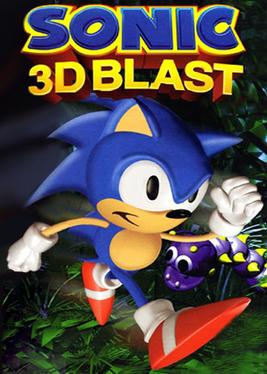
Sonic 3D Blast, known in Japan and PAL regions as Sonic 3D: Flickies' Island, is a 1996 platform game in the Sonic the Hedgehog series for the Sega Genesis and Sega Saturn. As Sonic the Hedgehog, the player embarks on a journey to save the Flickies, birds enslaved by Doctor Robotnik. The player must guide Sonic through a series of themed levels to collect Flickies and defeat Robotnik. Though it retains game mechanics from prior Sonic games, Sonic 3D Blast is differentiated by its 2D isometric perspective, with pre-rendered 3D models converted into sprites.
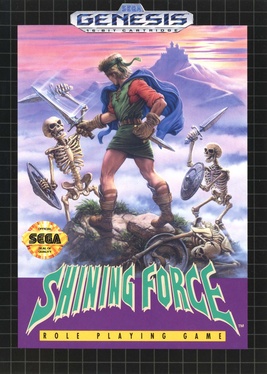
Shining Force is a 1992 turn-based tactical role-playing game for the Sega Genesis console. It is the second entry of the Shining series of video games, following Shining in the Darkness. While primarily a traditional fantasy-themed game, it contains some science fiction elements.
The Shining series is a name of role-playing video games published by Sega, who owns the property. The first game, Shining in the Darkness, was a first-person dungeon crawler with randomly encountered, turn-based battles. The next game released in the series was Shining Force, which was a turn-based strategy style tactical role-playing game with battle scenes acted out with sprites. Other directions include Shining Soul, a dungeon crawl action role-playing game with roguelike elements, and a number of traditional Japanese role-playing games. Shining Resonance Refrain was released on PlayStation 4, Xbox One, Steam PC and Nintendo Switch worldwide across 2018.

Earthworm Jim 2 is a 1995 run and gun platform video game and the sequel to Earthworm Jim, and the second and final game in the Earthworm Jim series developed by original creators Doug TenNapel, David Perry and Shiny Entertainment. It was released in late 1995 and early 1996 depending on region and video game console, initially being released for the Sega Genesis and Super Nintendo Entertainment System, before being ported to other platforms.

Shining in the Darkness, released as Shining and the Darkness in Japan, is a 1991 role-playing video game for the Mega Drive/Genesis video game console. It was the first in the Shining series.

Phantasy Star IV: The End of the Millennium is a 1993 role-playing video game by Sega for the Sega Genesis. It was first released in Japan and later in Europe and North America in 1995. It is the fourth and final game in the original Phantasy Star series, concluding the story of the Algol Star System. Phantasy Star IV kept many of the gameplay elements of the previous game, including turn-based battles, overhead exploration, and magic spells. It received mixed reviews upon its release but has since been considered one of the greatest video games of all time.

Primal Rage is a fighting game developed and released by Atari Games for arcades in 1994. The game takes place on a post-apocalyptic version of Earth called "Urth". Players control one of seven prehistoric beasts, that battle each other to determine the planet's fate. Matches feature many of the conventions of fighting games from the era, including special moves and gory finishing maneuvers. Ports were released for home video game consoles and personal computers. Efforts to perfectly emulate the arcade original have been unsuccessful due to the use of an unusual copy protection method. Toys, comics, a novel and other merchandise tie-ins were produced. More than 1.5 million copies of the game were sold.
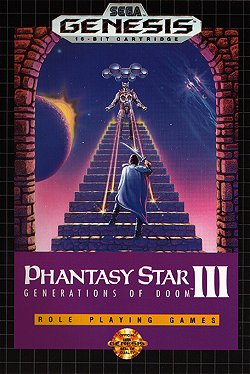
Phantasy Star III: Generations of Doom is a role-playing video game developed and published by Sega. It was released for the Sega Genesis in Japan in April 1990 and worldwide the following year. It is the third game in the original Phantasy Star series, and is a distant sequel to the previous games. However, gameplay is similar to the previous games, with turn-based combat and random encounters. Players explore various overworld maps and dungeons in order to progress through the game. It was later re-released on the Virtual Console and on retro collections such as the Phantasy Star Collection, Sega Genesis Collection, and Sonic's Ultimate Genesis Collection.

Dragon Force is a real-time strategy and role-playing video game from Sega created for the Sega Saturn. It was created in Japan and translated for North American release by Working Designs in 1996, a translation that was also used by Sega in Europe under license from Working Designs. The game's main selling point was that battles involve up to 200 soldiers fighting on screen in real time, causing them to be often likened to the battle scenes in the then-recent film Braveheart.

The Story of Thor, known in North America as Beyond Oasis, is a 1994 action-adventure game developed by Ancient and published by Sega for the Sega Genesis. The game was produced and had music written by Yuzo Koshiro. The Story of Thor was later released in various emulated collections. A prequel, The Story of Thor 2, was released for the Sega Saturn in 1996.

Shining Force II is a tactical role-playing game for the Mega Drive/Genesis console developed by Sonic! Software Planning and published by Sega in 1993. Its storyline is not directly connected to the original Shining Force, although a Game Gear title Shining Force Gaiden: Final Conflict links the two games' plots.

Shining Force III is a tactical role-playing game released for the Sega Saturn. In Japan, Shining Force III was an episodic video game with three discs - Scenario 1, Scenario 2, and Scenario 3 - released individually across late 1997 and 1998. Game data could be saved and transferred forward to later scenarios in order to influence events and obtain rewards in-game, a mechanic marketed as the "Synchronicity system". Each scenario utilizes the same core gameplay mechanics, but follows a different character's perspective of the overarching narrative in a shared game world. In North America and Europe, only the first entry, Scenario 1, was translated into English, and was simply titled Shining Force III for its release in mid-1998.
Phantasy Star is a series of console role-playing video games and other supplementary media created by Sega. The series debuted in 1987 on the Master System with Phantasy Star, and continues into the present with Phantasy Star Online 2 and other extensions of the Phantasy Star Online sub-series. Each of the games in the series features a science fantasy setting featuring a cross-genre combination of magic and technology.
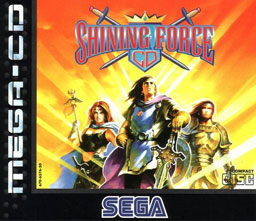
Shining Force CD (シャイニングフォースCD) is a 1994 strategy role-playing game developed by Sonic! Software Planning for the Sega CD, and a remake of the games Shining Force Gaiden and Shining Force Gaiden II that were originally for the Game Gear. Although the game went largely unnoticed upon release in 1995, it has gained a cult following and is considered to be one of the best titles released for the Sega CD platform.

Dark Savior is a 3D mixed-genre video game for the Sega Saturn created by Climax Entertainment. It was referred to by GameSpot as a sequel to the developer's game for the Sega Mega Drive/Genesis, Landstalker: The Treasures of King Nole, even though the games' storylines are unrelated and their gameplay is considerably different.

Shining the Holy Ark (シャイニング・ザ・ホーリィアーク) is a first person role-playing video game released in 1997 for the Sega Saturn. It is a part of Sega's Shining series of video games, and marked a new direction for the series, utilizing polygons as well as sprites for the visuals and a story targeted more specifically towards an adult audience. It introduced the saga of the Vandals and the Innovators, abandoning the saga of the Devil Kings which was followed by the previous installments of the series.
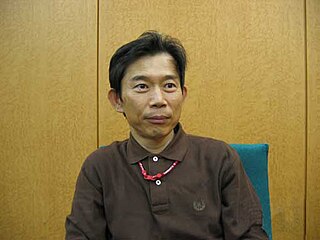
Hiroyuki Takahashi, is the president of the video game development studio Camelot Software Planning. He has participated in most of the company's projects as a game designer, producer, and writer.

The Terminator is a 1992 video game published for several Sega consoles, including the Sega Genesis, the Master System, and the portable Game Gear. It is based on the 1984 film of the same name. The game was developed by Probe Software and published by Virgin Games. The Terminator was praised for its graphics and sound, but criticized for its gameplay.

















